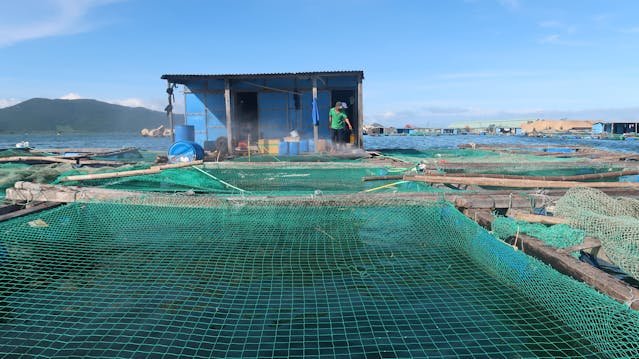Introduction to Gill Nets
What are Gill Nets?
Gill nets are a type of fishing gear that is designed to trap or catch fish by tangling them in a mesh. These nets are used all over the world, from subsistence fishing to large commercial operations. They are one of the most common methods, as they are effective and simple; however, their environmental impact is also a cause for concern.
Basic Knowledge
Fish swim into gill nets. The size of the mesh is selected carefully so that only the head of the fish can get through it while its body cannot penetrate. When it tries to retreat, its gills get stuck in the net and this traps it for later collection by fishermen.
Historical Development
There is evidence that ancient civilizations employed similar techniques to harvest fish which means that the use of gill nets goes back centuries ago. Over time, gill nets have undergone changes in design and materials making them more efficient and popular both in freshwater bodies and marine environments.
How Gill Nets Work
Design and Structure of Gill Nets
Gill nets are designed with a horizontal netting panel supported by floats at the top edge and weights at the bottom edge. The mesh uses monofilament or multifilament lines that can be clear or colored to match the water to trap fish. Mesh size is adjusted based on target species and ensures only fish of particular sizes are captured.
How Fish Get Caught in Gill Nets
Fish usually get tangled by their gills when they swim into the strands making up a net known as a “gill net.” Desire to escape from being caught forces it to retreat backward but its effort is futile because it has been entangled by its gills in the webbing. This type of trapping works well because, often, fish do not see this kind of mesh.
Types of Gill Nets
Drift Gill Nets
They float freely on the ocean’s surface and are mostly used in open seas. As they drift along with currents these nets catch hold of fishes. For example, such nets are employed mainly for pelagic types e.g., tuna; swordfish, etc.
Set Gill Nets
Stationary gill nets are set in place and can either be on the sea bottom or in shallow waters. They lie still waiting for fish to swim into them. Set gill nets are mostly used in coastal and freshwater fishing.
Trammel Nets
A more complicated kind of gill net is a trammel net that has three layers of fishing net. In addition, it has larger mesh sizes on the outer layers as compared to the size of mesh used internally. Such design enhances the entanglement of fish to make these gears versatile enough for capturing different types of fish.
Uses of Gill Nets
Commercial Fishing
The efficiency and ability to capture large quantities of fish make gill nets very popular in commercial fishing where they are commonly used. For example, salmon, cod, and mackerel are species that are frequently caught using these types of gear. Because they are easy to construct and come at a low cost, gill nets have become a major tool for commercial fishermen.
Subsistence Fishing
Gillnets have been employed for subsistence fishing activities around the globe, particularly in some parts. Small-scale fishermen rely on gill nets to catch enough fish to feed their families and communities. Anybody who is resourceful enough can access such meshes since they are easily made and applied by all persons alike due to the limited resources available.
The Future of Gill Nets
Innovations in Gill Net Design
The future of gill nets is tied to innovation. Designing new ones with other substances and materials to decrease bycatch, prevent ghost fishing as well as increase selectivity in gill nets can help in making them more sustainable and ecologically friendly. Therefore, innovative efforts are ongoing to develop better designs that reduce bycatch and promote selectivity in gill nets, this will make the practice environmentally friendly.
Alternatives to Gill Nets
Options are being considered as concerns mount over the environmental impacts of gill nets. Some of these include selective methods like hook-and-line fishing or traps which have minimal effect on marine ecosystems and less bycatch. Consequently, the future of sustainable fishing depends on developing alternative fishing gear.
Balancing Fishing Needs with Conservation
In the future, fishermen will have to find a balance between their needs and those for the conservation of marine systems. This necessitates a combined effort between fishers, scientists, authorities, and environmentalists who should develop and introduce sustainable fishing practices aimed at safeguarding our oceans.
Conclusion
Gillnets have played an important part in the history of fisheries for centuries as they provide an efficient and cost-effective way of capturing fish. Nevertheless, their ecological consequences are undeniable. Therefore, understanding the challenges that come with them while adopting responsible actions will ensure that fishermen can use gill nets effectively while maintaining ocean health.
